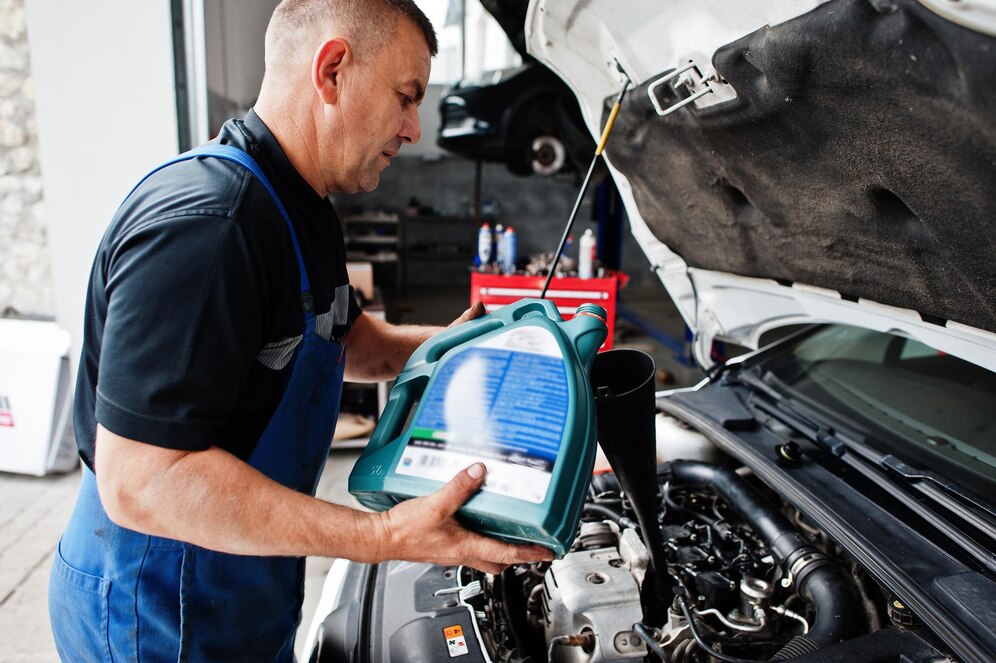
Have you ever noticed a mysterious puddle under your car and wondered if it’s something serious? Transmission leaks are a common issue that, if ignored, can lead to costly repairs. The good news is that many leaks can be resolved with basic tools and a bit of patience. In this guide, you’ll learn how to identify, diagnose, and tackle a transmission leak repair on your own, saving you time and money.
Understanding Transmission Leaks
Your vehicle’s transmission is a complex system that relies on fluid to lubricate parts, cool components, and ensure smooth gear shifts. A leak in this system can lead to poor performance, overheating, or even complete failure. Let’s break down the common culprits:
- Worn Seals or Gaskets: Over time, rubber seals and gaskets can dry out, crack, or become misaligned. The transmission pan gasket, for example, is prone to wear due to constant exposure to heat and pressure.
- Loose or Damaged Transmission Lines: These metal or rubber lines carry fluid to the radiator for cooling. Corrosion, road debris, or improper installation can cause leaks.
- Faulty Output Shaft Seal: This seal sits where the driveshaft connects to the transmission. Damage here often leads to fluid dripping near the rear of the vehicle.
- Cracked Transmission Pan: Hitting a pothole or debris can dent or crack the pan, creating an obvious leak source.
Diagnosing the Leak
Before grabbing your tools, confirm that the leak is indeed transmission fluid. Transmission fluid is typically red or brown and has a slightly sweet smell, unlike engine oil (which is darker, and smells burnt). Here’s how to pinpoint the issue:
- Inspect the Fluid: Use a clean cloth to dab the fluid. If it’s red and slick, it’s transmission fluid.
- Check Common Leak Points:
- Transmission Pan: Look for wetness around the edges.
- Cooling Lines: Follow the lines from the transmission to the radiator.
- Output Shaft Seal: Inspect the area around the driveshaft.
- Clean and Monitor: Wipe down suspected areas with degreaser, then run the engine and check for fresh leaks.
Tools You’ll Need
- Socket set and wrenches
- Jack and jack stands
- New gasket or seal (specific to your vehicle)
- Transmission fluid (check your owner’s manual for the correct type)
- Drain pan
- Torque wrench
- Safety gloves and goggles
- Step 1: Safely lift the car and secure it on jack stands.
- Step 2: Place a drain pan under the transmission pan and remove the bolts. Let the fluid drain completely.
- Step 3: Scrape off the old gasket residue from the pan and transmission housing.
- Step 4: Install the new gasket, apply a thin layer of sealant (if recommended), and reattach the pan. Tighten bolts in a crisscross pattern to avoid warping.
- Step 1: Identify the damaged section of the line.
- Step 2: Use a line wrench to disconnect the faulty line.
- Step 3: Install a replacement line or seal the leak with a transmission line repair kit.
- Step 1: Remove the driveshaft to access the seal.
- Step 2: Pry out the old seal gently with a screwdriver.
- Step 3: Lubricate the new seal with transmission fluid and tap it into place with a mallet.
Step-by-Step Transmission Leak Repair
1. Fixing a Transmission Pan Gasket Leak
2. Repairing Leaky Transmission Lines
3. Replacing an Output Shaft Seal
Preventing Future Leaks
- Regular Inspections: Check fluid levels monthly and look for signs of leaks.
- Fluid Changes: Replace transmission fluid every 60,000–100,000 km (refer to your manual).
- Avoid Overheating: Use a transmission cooler if you frequently tow heavy loads.
When to Call a Professional
While DIY transmission leak repair is feasible for minor issues, seek professional help if:
- The leak is near internal components (e.g., torque converter).
- You notice grinding noises or slipping gears, indicating internal damage.
- Multiple leaks are present, suggesting widespread wear.
FAQs
Is it safe to drive with a transmission leak?
Short trips to a repair shop are okay if fluid levels are maintained. Prolonged driving risks irreversible damage.
How much does professional repair cost in Australia?
Costs range from 150foragasketreplacementto150foragasketreplacementto1,000+ for seal or line repairs.
Can a leak affect fuel efficiency?
Yes. Low fluid levels force the transmission to work harder, reducing mileage.
Final Thoughts
A transmission leak repair might seem daunting, but with careful diagnosis and the right approach, it’s a manageable task for most car owners. Addressing leaks early not only saves money but also extends the life of your transmission. Remember: regular maintenance is the key to avoiding future issues. Now, grab your tools and tackle that leak with confidence—your car (and wallet) will thank you!





